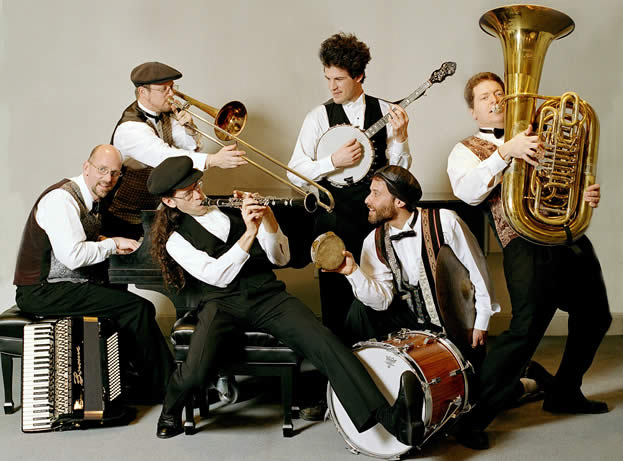


______________





Andy Statman is a notable Klezmer clarinetist and a bluegrass and newgrass mandolinist. He first gained acclaim as a mandolinist in pioneering the blugerass bands Country Cookin' and Breakfast Special. Statman, as a Jew, soon became aware that bluegrass was not really his natural music and so he turned to Klezmer and traditional Jewish music. As he was by now a clarinetist as well as a mandolinist, he became involved in recording various Klezmer albums which became very influential in the Klezmer revival that began in the late 1970s.
Later on, in the 1990's, he started experimenting with Hassidic melodies, fusing bluegrass, klezmer and jazz music very effectively.
Andy Statman was taught to play clarinet by the legendary Klezmer clarinetist Dave Tarras who we considered in my earlier article. Dave Tarras bequeathed his clarinets to Andy Statman and so they obviously had a great rapport as musicians.
The Andy Statman Trio, which includes bassist Jim Whitney and drummer Larry Eagle, plays regularly at Derech Amuno Synagogue in Greenwich Village in New York City.
Although Andy Statman has had a huge influence on the development of both Bluegrass and Klezmer, he has remained a musician of great integrity and tends to remain out of the limelight. Every year he performs in a Klezmer concert series in which he teams up with Itzhak Perlman (of classical violin fame) and other big names in the Klezmer world. He was featured as a guest artist on Bela Fleck and the Flecktones holiday album 'Jingle all the way', released in 2008. Here he played both clarinet and mandolin; the album won the prize for Best Instrumental Album at the 51st. Grammy Awards. He also joined this group in concert on 10th. December, 2008 at the University of Buffalo Centre for the Arts and again on 16th. December, 2008 at Philadelphia's Kimmel Cenre.
dit]You can find some further interesting details about the Andy Statman Trio at the link provided below.
The Andy Statman Trio
____________________
![THE KLEZMORIM, Berkeley, 1979. L to R: Brian Wishnefsky, Kevin Linscott, John Raskin, David Julian Gray, Lev Liberman. [Photo: Cornelia Bryer]](http://klezmo.com/pix/normandy2.gif)
The Klezmorim
L. to R.: Brian Wishnefsky, Kevin Linscott, John Raskin, David Julian Gray, Lev Liberman.
In 1975 a motley crew of street musicians from Berkeley, California was instrumental in giving a kick start to a worldwide klezmer revival. Their story, as told by their co-founder and saxophone player Lev Liberman, can be found via the following link.
David Skuse was the other person who helped found the new group. There are also details of the current band line up and their biographies on this website.
Founded in Berkeley, California in 1975, the Klezmorim origianlly featured strings, notably the virtuoso violin of David Skuse. Skuse left the band in 1977 and it then changed into a brass band led by Lev Liberman's saxophone and David Julian Gray's clarinet (Gray was also a founder member).
They then concentrated on trying to recreate the sounds of the early 20th. century klezmer bands, for which they achieved worldwide acclaim, receiving a Grammy nomination in 1983 and selling out concerts in North America and Europe throughout the 1980s. By 1986 all the original players had left and it was tuba player Donald Thornton, (he joined in 1979), who ensured that the Klezmorim continued to tour under their original name, featuring leading players of the klezmer revival. Lev Liberman took the new line-up on a successful tour of Europe in 2004 and there are continued rumours that they are due to release new recordings.
In my next article I hope to look at the work of the Klezmer Conservatory Band and some of the artists who featured in the second wave of the klezmer music revival. Meanwhile, you might like to listen to some of the artists I have mentioned in this article. You could try Last FM or Spotify who have quite good catalogues of klezmer music.
%20Christoph%20Giese.JPG)

No comments:
Post a Comment